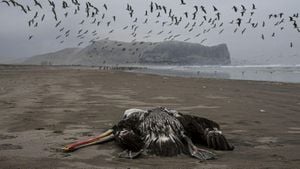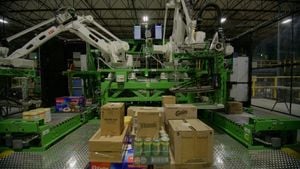Primordial black holes, the elusive entities theorized to have formed shortly after the Big Bang, might have quietly replaced stars instead of being merely cosmic leftovers. Recent studies suggest these black holes—born from high-density fluctuations—could act much like gravitational bullies, pushing stars out of their orbits and potentially altering the structure of galaxy formation.
Some scientists propose these primordial black holes (PBHs) formed early through processes distinct from stellar collapse. Their theoretical range spans from objects smaller than atoms to massive bodies larger than the sun, making their influence on cosmic evolution significant.
Due to their mass and gravitational power, these primordial black holes are thought to interact heavily with nearby stars, particularly within binary systems. Just as one might push or shove someone aside, PBHs might disrupt star formation by ejecting nearby stars from their gravitational grips.
Whether these PBHs could account for dark matter is still contentious among astrobiologists. Some tout them as possible contributors to the dark matter framework, potentially comprising nearly 10% of its known mass.
Despite their gravitational influence, distinguishing between PBHs and other forms of dark matter is challenging due to their unpredictable distribution across the universe. Their detection may require groundbreaking observational strategies, possibly focusing on interactions between PBHs and stellar systems.
Recent research led by Badal Bhalla from the University of Oklahoma outlines how binary systems might behave when they interact with black holes. The study elucidates five primary outcomes, including hardening, softening, disruption, capture, and exchange, highlighting the highly dynamic nature of these interactions.
Investigations previously favored disruption and softening models but now lean toward exploring the exchange model. The latter might lead to the formation of binary black holes, and early observations hint at their existence within the Milky Way.
The models predicting binary interactions offer nuanced insights but are still under scrutiny. Researchers believe observation of subsolar mass black holes within binary systems could serve as potential confirmation of these theories.
On the forefront of the hunt for primordial black holes and insights about the early universe is the James Webb Space Telescope (JWST). It's providing astronomers unprecedented data to understand celestial objects at the very edge of the cosmos, offering hints at conditions post-Big Bang.
Researchers also aim to marry these discoveries with early theories about the Epoch of Reionization, the period when the universe transitioned from opacity to transparency as stars and galaxies began to emit light. Knowledge of these phases may allow scientists to pinpoint the origins of galaxies and their formation histories.
Astronomer Anna-Christina Eilers notes the importance of quasars—supermassive black holes at the heart of distant galaxies—pertaining to the study of the early universe. Observing quasars from ancient times provides data about cosmic events, particularly at the dawn of star formation and reionization.
With JWST capturing the light emitted from quasars located billions of light-years away, researchers are working to clarify how these structures influenced the broader cosmos. Their research centers on the timing and the sources behind reionization, providing critical insight about the universe's evolution.
According to the data analyzed by Eilers and her collaborators, reionization seemed to begin approximately 150 million years after the Big Bang. This event marked the commencement of light's ability to pass freely through the still-dark intergalactic medium.
Yet, even with growing knowledge, questions linger about which stars and galaxies played pivotal roles during this transition. Determining the specific contributions and conditions leading to reionization remains one of the exciting challenges within the astrophysical community.
Another promising angle of research relates to how massive quasars formed so early, as they appear too large to have accreted material within the standard timeframe. This raises questions about early stellar formation and whether yet unknown mechanisms influenced their growth.
The quest to unravel these mysteries not only reshapes our comprehension of cosmic history but also inspires astronomers to look closer at the early universe's makeup. Recognizing the potential interrelationships of primordial black holes, quasars, and the dark matter may soon lead to new revelations about existence itself.
The need for novel observational techniques and collaborative investigations is clear as researchers continue to push the boundaries of our current models. Ongoing studies should yield more refined answers, shedding light on how the cosmos evolved from darkness to the luminous universe we observe today.
Engaging students and future scientists remains integral to this quest. Initiatives like Encouraging Women Across All Borders have emerged, directing focus at inspiring new generations to explore the universe’s vastness, ensuring the next wave of astrobiologists and cosmologists continue the work of those before them.
Through witnessing the brilliance of the night sky, one recognizes the beauty and complexity of the universe at large. With the combination of advanced instruments like JWST and passionate researchers, humanity edges closer to deciphering the enigma of existence.
The study of primordial black holes and early cosmic events ushers us not only to understand our origins but also to comprehend the very fabric of reality itself. It’s this synergy of knowledge, curiosity, and exploration driving science forward, illuminating the depths of cosmic history and perhaps one day responding to the age-old question: are we truly alone?



